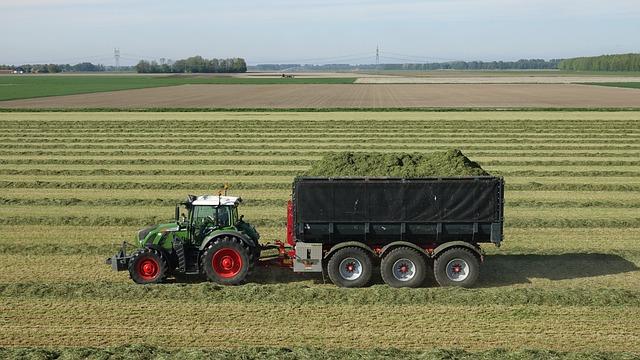Embracing Natural Landscapes: The Year-Round Shift from No Mow May
In a burgeoning movement that challenges the traditional aesthetics of suburban lawns, many homeowners are opting for a more organic approach to their outdoor spaces by adopting the principles of “No Mow May” throughout the entire year. Initially introduced as a seasonal campaign to foster pollinator-friendly environments, this trend signifies a larger transformation in how we perceive lawn care and environmental responsibility. With increasing concerns about biodiversity loss and climate change, individuals are replacing their neatly trimmed grass with vibrant wildflower patches and native plants, thereby creating thriving ecosystems that benefit local wildlife. This article delves into the reasons behind this shift and its broader implications for homeowners and communities as they redefine beauty in their outdoor areas.
Homeowners Adopt Natural Landscaping as No Mow May Becomes a Year-Round Practice
As dissatisfaction with conventional manicured lawns grows among homeowners nationwide, there is an increasing trend towards embracing organic gardening methods. The No Mow May initiative encourages people to refrain from mowing during May to support local bee populations; however, it has evolved into a year-long lifestyle choice for many enthusiasts. By adopting this philosophy, homeowners are transforming both their front yards and backyards into lush landscapes filled with diverse plant life that prioritizes native species over uniform grass. This transition not only promotes environmental sustainability but also offers an appealing alternative to typical suburban aesthetics.
The advantages of shifting towards natural landscaping practices are numerous. Homeowners discover that gardens featuring native plants and wildflowers enhance wildlife habitats while minimizing reliance on chemical fertilizers and reducing water usage. Some notable benefits include:
- Increased Biodiversity: Native flora attracts essential pollinators such as bees and butterflies.
- Easier Maintenance: Once established, these gardens require significantly less upkeep.
- Cost Savings: Reduced mowing frequency leads to lower utility expenses.
The growing popularity of these practices is being supported by community workshops aimed at educating residents about ecological gardening techniques while fostering connections through shared experiences. As more individuals embrace this movement, they begin redefining what constitutes beauty in home landscapes—prioritizing ecological health over aesthetic conformity—and encouraging others to reconsider their lawn care choices moving forward.
Environmental Advantages of Wild Lawns: Supporting Local Ecosystems
The conversion of traditional lawns into wildflower meadows or native plant gardens has profound effects on local ecosystems. Allowing grasses and wildflowers to thrive enables homeowners to contribute positively toward enhancing biodiversity within their communities. This practice supports various pollinators crucial for plant reproduction while requiring fewer resources than conventional lawns—resulting in decreased water consumption along with reduced use of harmful chemicals like pesticides or fertilizers. Key benefits include:
- Diverse Habitats: Wild lawns attract numerous species creating rich microhabitats.
- Sustainable Soil Health: Native plants improve soil quality while retaining moisture effectively.
- Lesser Carbon Emissions: Reduced mowing activities lead directly to lower greenhouse gas emissions.
- Nutritional Resources for Wildlife: Increased vegetation provides vital nutrients necessary for local fauna’s survival.
This initiative not only cultivates resilient environments but also reshapes community perceptions regarding aesthetics in landscaping design choices made by residents participating in this trend report increased sightings of indigenous wildlife within their properties.
This collaboration between humans and nature fosters landscape practices reflecting regional identity alongside historical ecology—emphasizing grassroots conservation efforts’ significance.
For example, studies indicate regions boasting greater plant diversity can substantially mitigate urban heat effects while improving air quality overall.
The table below illustrates some positive impacts associated with maintaining wild lawns on surrounding environments:
| Description | Affect on Environment |
|---|
Expert Advice: Transitioning To No-Mow Methods While Preserving Curb Appeal
Migrating towards no-mow strategies can elevate your home’s exterior appearance whilst simultaneously supporting biodiversity initiatives! Prioritizing indigenous plants stands out among effective ways ensuring curb appeal remains intact without necessitating constant maintenance typically associated with traditional grassy areas! Consider integratinga variety including flowering shrubs & grasses suited specifically tailored according climate conditions!This approach minimizes environmental impact whilst cultivating lively gardens attracting beneficial insects/wildlife alike! Additionally incorporating hardscape features such aswinding pathways , decorative stones & borders adds character/structure enhancing overall visual appeal!
If you wish maintain visual interest throughout your yard consider establishing defined zones or embracing an aesthetic characterized by “wildness.” You could create dynamic visuals interspersed ornamental grasses alongside flowering varieties complemented strategically placed seating arrangements/fire pits ! Utilize color/textural contrasts selecting diverse growth habits amongst chosen specimens ! Establishing visual hierarchies through elevation layering techniques further enhances depth perception across landscaped areas ! Here’s quick reference guide assisting planning selections :
| Indigenous Grasses td > | Low irrigation requirements + habitat provision td > | Minimal pruning required td > |
| Pollen-Producing Flowers < / td >
|
